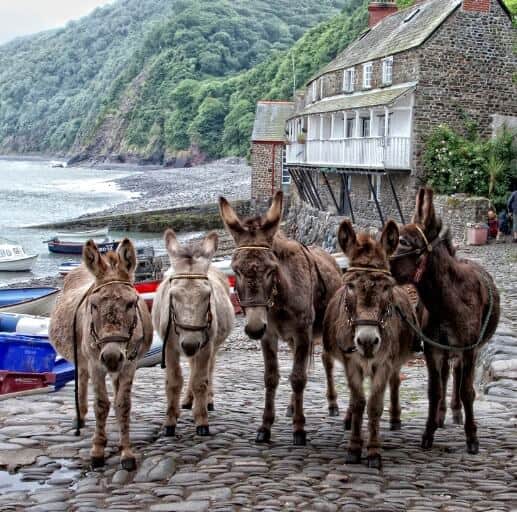
Find your slice of Devon heaven.....
Just how glorious is this view… and it’s all yours when you head to the fascinating village of Clovelly in North Devon: still a fully functioning fishing village, hanging on the edge of a 400ft cliff.
Step foot on its cobbled streets and you’ll travel back more than 100 years, as you leave your transport in the car park at the visitors’ centre and travel under your own steam (Land Rover taxis up the steep hill to the visitors’ centre are the only vehicles you’ll find in this historic spot).
Keen to take a guided tour, we were met by Jana Edwards, who showed us a brief film outlining the history of the village before we headed out. Jana’s hugely knowledgeable about the Rouse Family, who’ve owned the village since Elizabethan times. She explained that the main source of transport to get shopping and goods down to the village are man-powered sledges (donkeys used to pull the sledges, but are now here to give children a ride). Suffice to say anything, such as moving house, is a long and laborious task!
My partner Mark and I stayed at the Red Lion, one of two hotels that serve the village; the other is the New Inn. There are also several smaller B&Bs, as well as a hostel. Right on the harbour front, the Red Lion has its main hotel together with a row of further bedrooms converted from an old store called the Sail Loft, which are very swish. Top tip: if you like the idea of waking up to the sound of the sea washing on the shore these are ideal. The food is very tasty and varied, and you can either sit in the bar and eat or dine in the spacious restaurant.
Steam buffs, listen up…
Reluctant as we were to leave the clutches of glorious Clovelly, a trip to nearby Coldharbour Mill tempted us away. This working woollen mill, dating back to 1797, was originally a corn mill and today gives a taste of 18th century Devon working life.
The staff are welcoming and knowledgeable and we were shown around by a fantastic guide who demonstrated how the looms work and told us all about the conditions the employees had to work under.
The mill was powered by steam from the 1800s and there’s the opportunity to see the boilers working several times a year (on designated days) by a steam society. Most of the exhibits are original to the site, and some are from Fox’s Mill, at nearby Wellington.